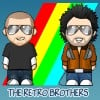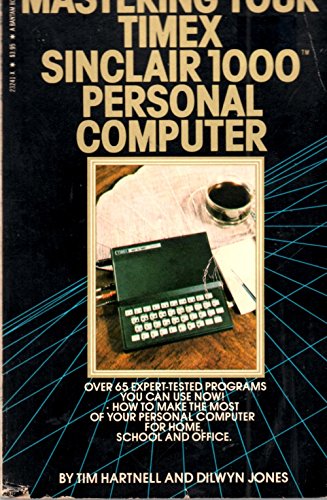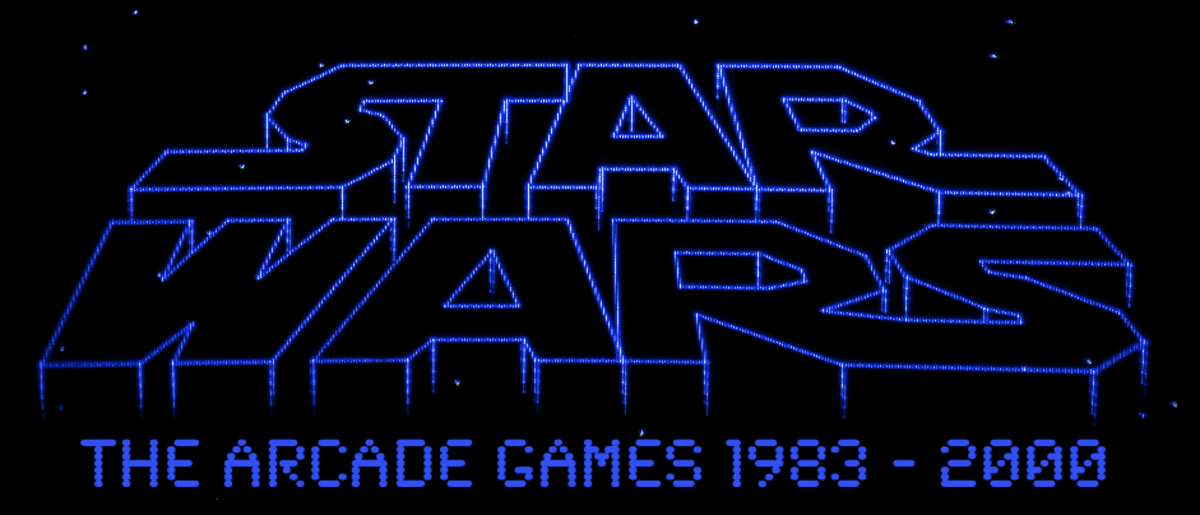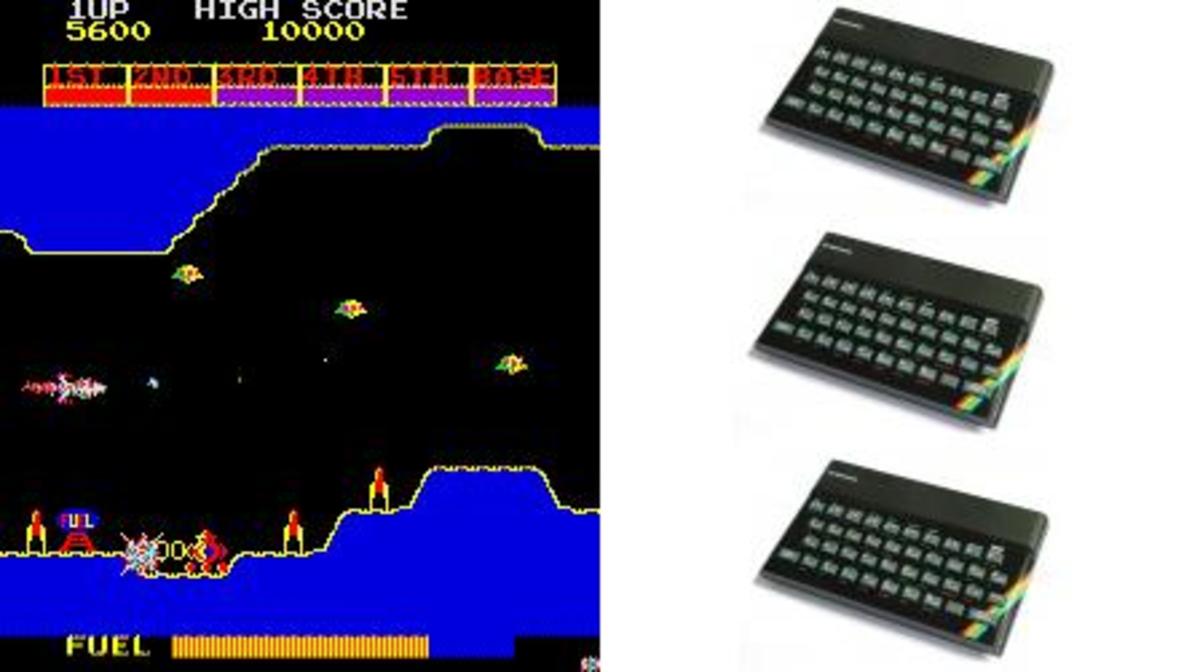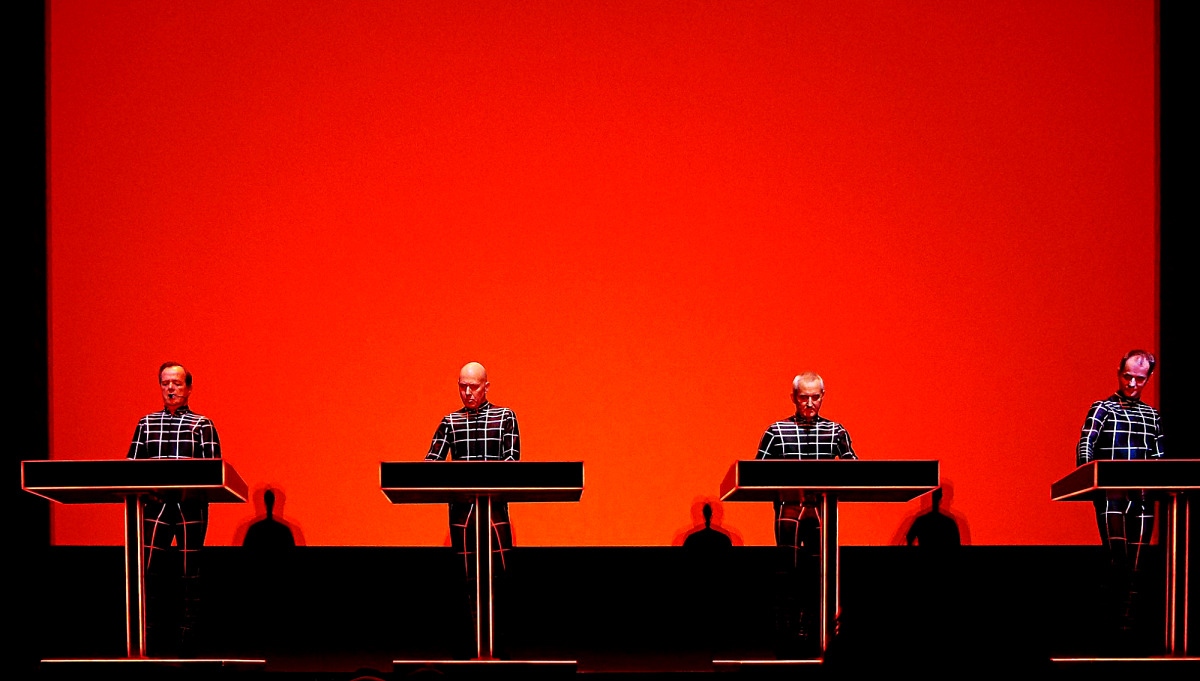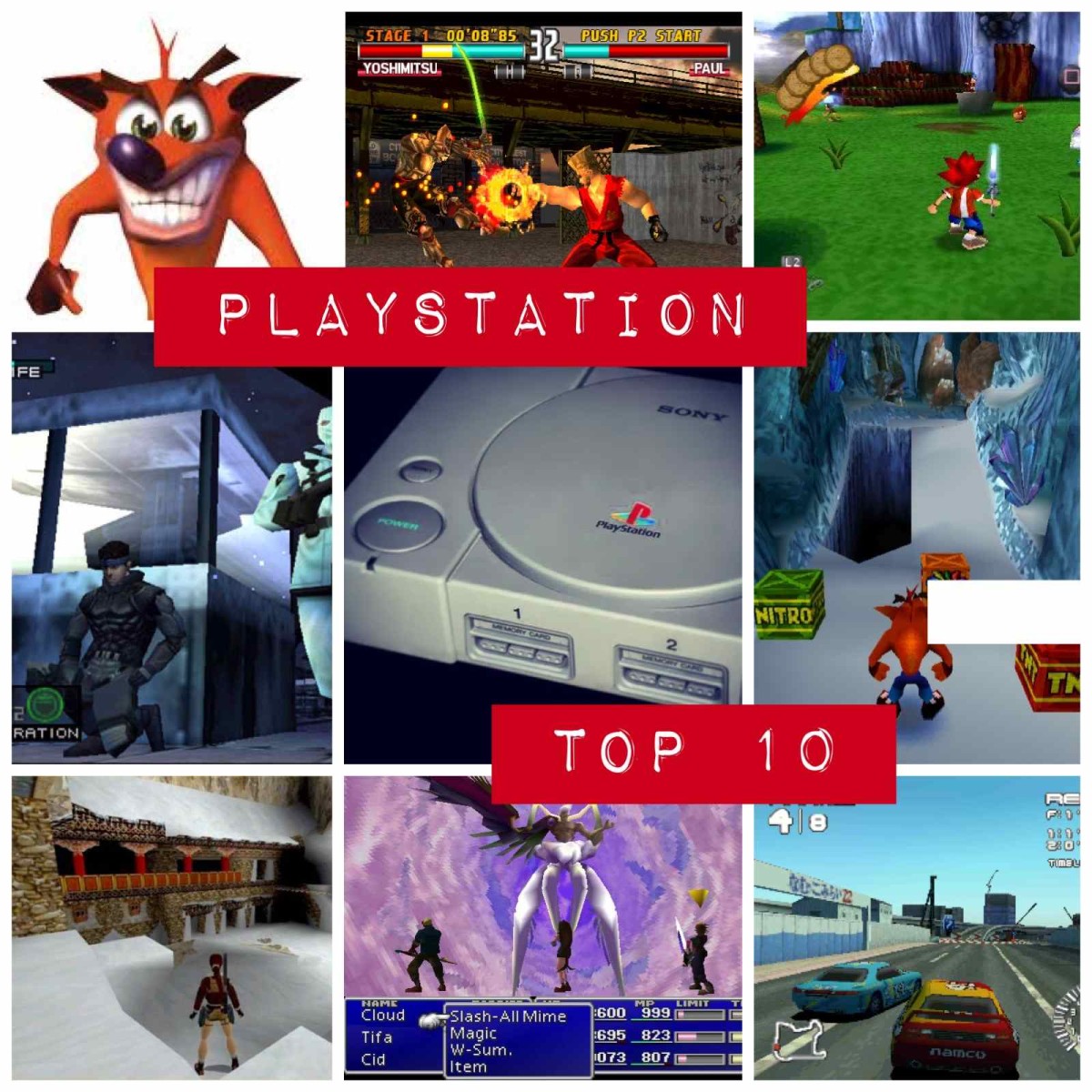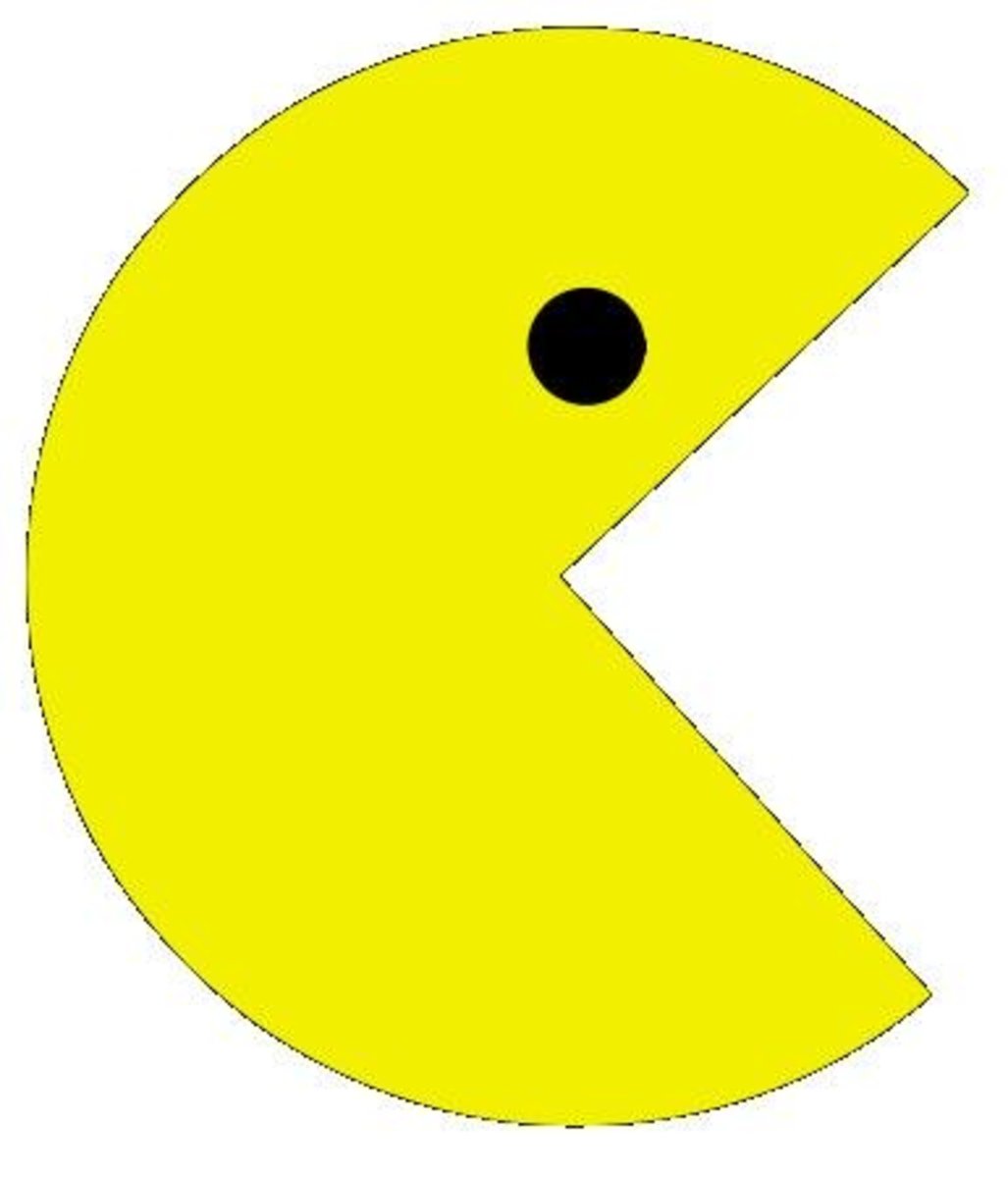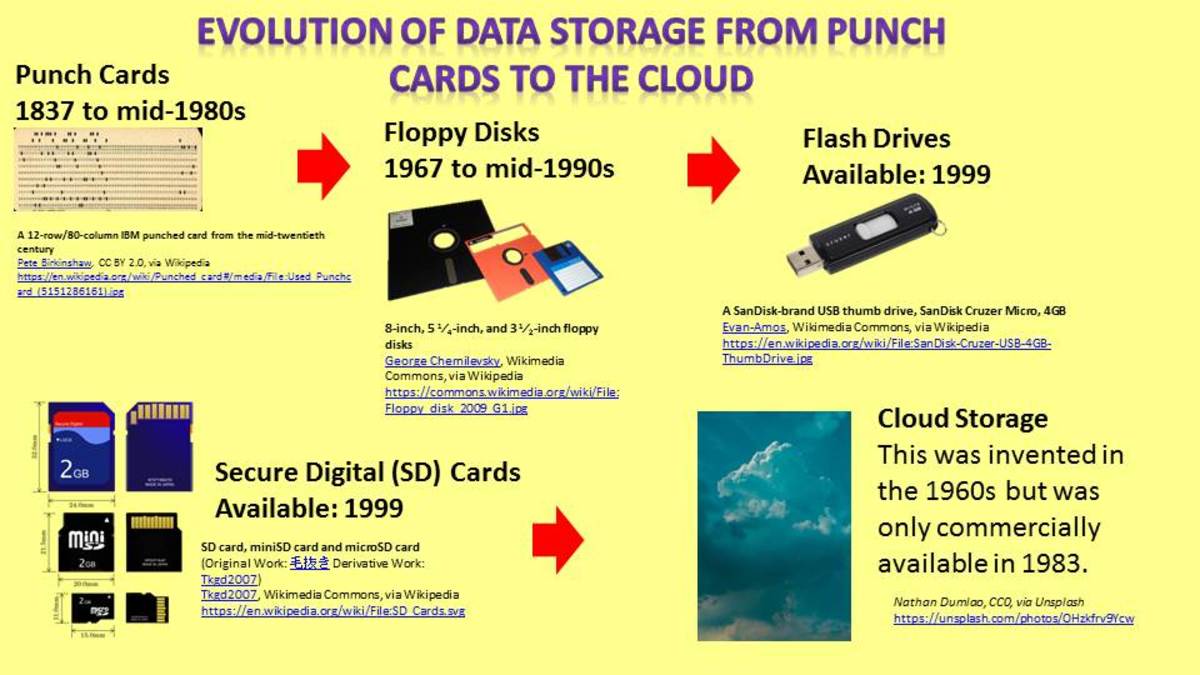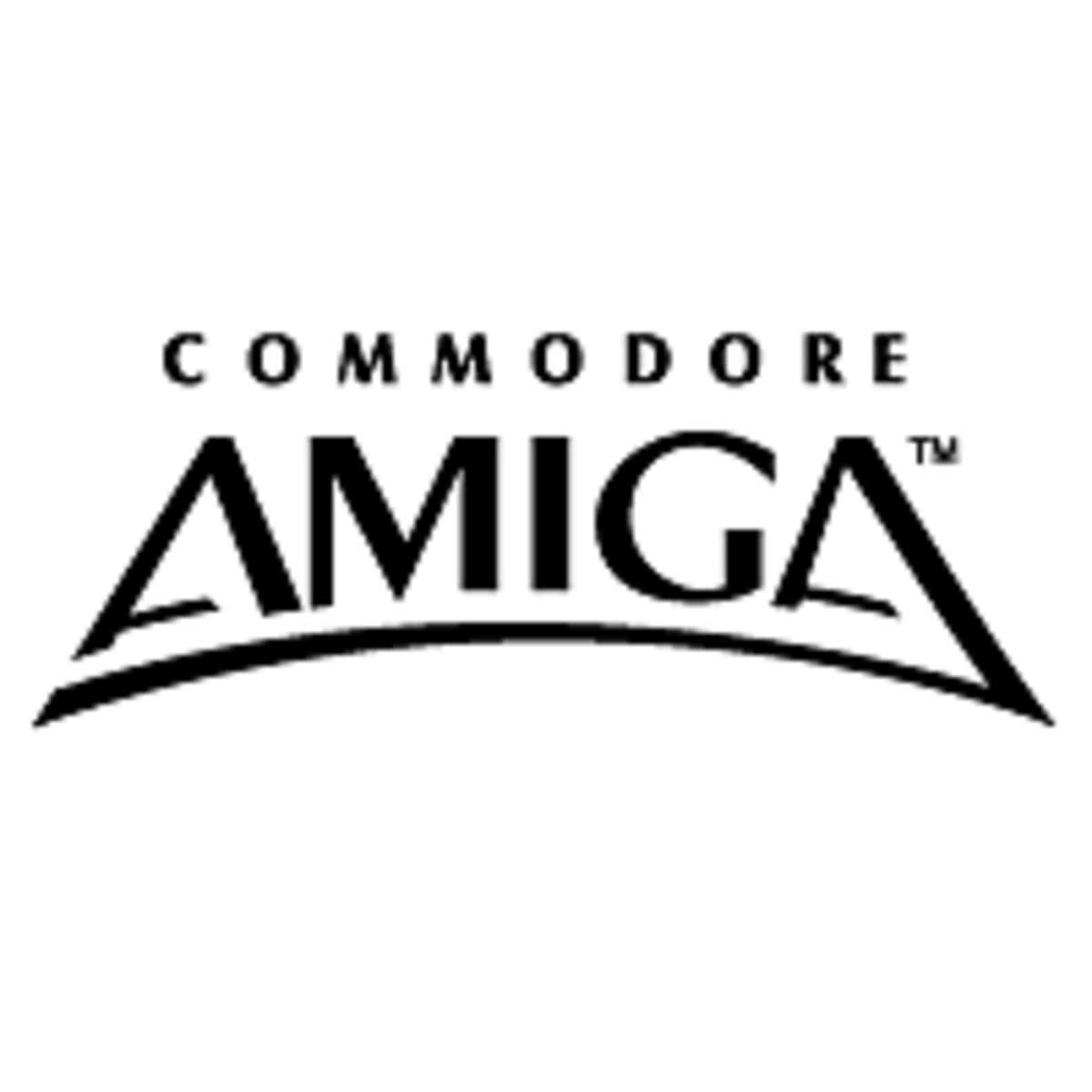Dragon 32
Dragon 32
The Dragon 32 was an 8-bit home computer launched back in August of 1982 at an initial cost of £199 in the UK.
Dragon Data Ltd were behind the machine and were a small company based in Wales (in Port Talbot to be precise).
This machine was released around the same time as the Sinclair ZX Spectrum, Oric 1 and Commodore 64 systems both of which were becoming established in the UK and would provide stiff competition to Dragon Data's new machine.
Let's have a look at a lesser known retro computer that managed to become pretty popular in the UK amongst the glut of other 8-bit machines that were hitting the market at the time...
Dragon 32 Overview
The computer was almost a complete clone of the Tandy Color Computer (The TRS-80)
They were based around the Motorola MC6809E CPU, which was a faster more capable processor than the older MOS 6502 and Zilog Z80 CPU's that the competition was using (such as the ZX81 and ZX Spectrum).
Whilst processing power was good both the C64 and the ZX Spectrum outranked the Dragon (and Tandy computers) with graphical capability.
The Commodore 64 had built in sprite capability making solid colour large graphics possible, and the ZX Spectrum was capable of creating detailled and sharply defined graphics.
The Dragon computer got a parallel port (which was very handy) and it also has additional circuitry to allow it to work on Europen 625-line TVs rather than the 525-line US PAL standard.
Strangely - and a huge drawback of the machine was the fact that the Dragon was unable to display lowercase letters easily.
This caused it to be a non-starter in the all-important educational market - and no doubt helped to shorten the life span of the machine.
The Dragon 32
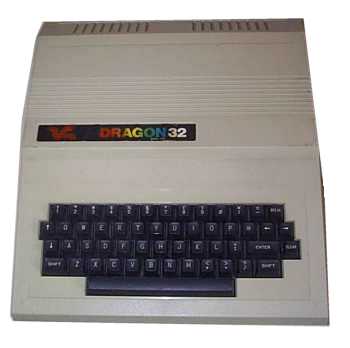
Android Invaders on the Dragon 32
The Dragon 32 Family Computer
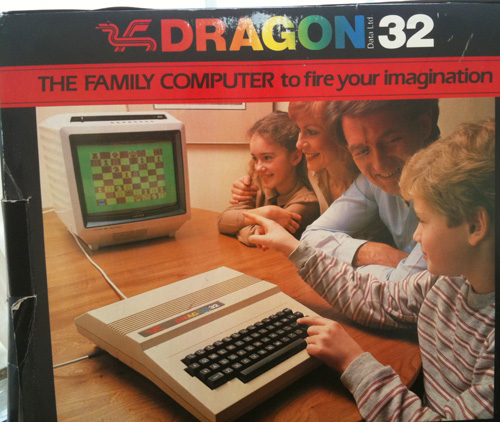
Skramble On The Dragon 32
Some Technical Info on the Dragon 32
The sound the machine could produce was nothing to write home about - giving 1 voice over 5 octaves (in BASIC).
It was possible to produce better sound effects with machine code routines though, allowing the programmer access to 4 voices over 7 octaves.
Due to the relatively poor graphics capabilites (compared to the competition - even the Oric 1 and Oric Atmos were better visually) and associated glitches very few arcade type games were developed for the Dragon 32, save for the classics such as Scramble, Space Invaders and Frogger.
Quite a few text adventures made it onto the machine though (text adventures such as Ground Zero were very popular throughout the 1980s) - presumably they were predominantly presented in uppercase!
If you were into text adventures (as many users were back in the 1980s) then there was plenty of quality to choose from for the Dragon user.
Programming and modding the Dragon 32
The Dragon QWERTY typewriter keyboard was decent and responsive enough, and the BASIC that was built into the ROM was actually a version of Microsoft extended Basic.
This was an excellent version of BASIC for both teaching and learning - but had the side-effect of making the lowercase display problem even more infurating!
A broad range of peripherals were released for the Dragon 32.
Add-ons such as the nicely named Dragon's Claw were highly innovative. It gave the Dragons access to the BBC Micro's large range of accessories which was an important factor in the UK home market - especially the educational sector.
Although neither machine had a built-in disk operating system (cassette tapes were the default data-storage mechanism in the early 1980s), DragonDOS was supplied as part of the disk controller interface from Dragon Data Ltd. This was quite ahead of it's time and something different when compared to the Speccy or the C64.
The numerous external ports that the machinbe was blessed with were excellent for the era, including the standard RS-232 (on the later Dragon 64), allowed users to attach a diverse range of equipment to the machine. It was even possible to use a light-pen (remember them?) via the built in joystick port.
Another good feature was a monitor port as an alternative to TV output - monitors at the time were far nicer than your average TV unit. Unfortunately monitors tended to cost a lot of money and home users rarely used them due to the excessive cost.
There was also a port on the machine to link up a Centronics printer - again this was impressive as some other machines required interfaces to connect to various pieces of hardware.
The market driving force was soon to become computer games (even though you begged for a computer to 'do your homework!') and this is really where the Dragon machines fell down.
Due to the machines graphical limitations, the gaming software library in this area ended up being similarly limited. Having said that there are versions of the classic arcade games of the era available for the machine and plenty of text adventures to get your teeth into.
As a result of the lower case display and general 'poorish' graphics, the Dragon machines(both the 32 and 64) never went on to become huge sellers. Dragon Data finally collapsed in June of 1984 - but software was still developed for the machine for a number of years later.
Despite the demise of the parent company, Dragon computers still proved to be quite popular (which is not surprising as they were extremely customisable).
They were based on a robust motherboard which was embedded within a spacious chassis, and were much more tolerant to user modification than many of their contemporaries (a lot of machines had the memory expanded to 64K, 128KB, 256KB and even 512KB!)
Other machines at that time did not have the inner space or slots for such heavy modification, making them an ideal choice for someone who likes to get 'under the hood' and play around with the hardware.
If only Dragon Data Ltd had given the machine decent graphics then perhaps more arcade type games would have been created for it - this and the lower case visual problem were the only real downsides to the machine.
You Can Even Purchase A Dragon Logo T-Shirt
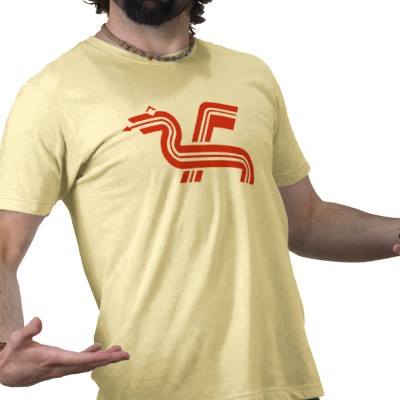
Frogger On The Dragon 32
Cuthbert In The Jungle on the Dragon 32
Horace Goes Skiing on the Dragon 32
Despite The Few Shortcomings...
A number of games were released for the Dragon computer.
As the videos show versions of Space Invaders, Frogger, Scramble, Galaga (called Galagon on this machine) and many more were released for the machine.
Versions of classic games on other formats were released for the machine with Activision's Pitfall (made famous on the Atari 2600 and Atari 5200) was roughly put out on the Dragon 32.
It was called Cuthbert In The Jungle (got to love a name like that!) and the gameplay was very similar to the Activision classic.
Even the famous Horace Goes Skiing (one of the most famous ZX Spectrum Games) was released for the Dragon - so with a little effort the machine could be used as a games machine.
Other releases such as 'Ugh' oozed charm - in fact that game was very much in the 'game and watch' mould - but it was quite an interesting and addictive little game.
Once the juggernauts of the ZX Spectrum and Commodore 64 got rolling the Dragon faded into the background along with the machines from Oric and the Acorn Electron.
Even the BBC Micro and Amstrad CPC 464 became more popular than the machines from Dragon. Games such as Space War did little to enhance the Dragon's reputation - this game must go down as one of the all time 8-bit turkeys.
With the competition sporting the likes of SID music, AY Music and nice graphics the Dragon just fell behind in the gaming stakes - it became more popular with people who like to tinker with hardware!
Once the 16-bit machines such as the Atari ST, Commodore Amiga and A1200 (and people caught on to amiga games) appeared it's fate was well and truly sealed.
It was by no means a bad machine, in some ways it was very good. If the graphics has been up to par then the machine may well have went from strength to strength...
Galaga Clone Galagon on the Dragon 32
Donkey King On The Dragon 32
Ugh! On The Dragon 32
The Abominably Bad Space War
Retro Gaming Links
- Acorn Archimedes
Superb yet expensive 16-bits - Acorn Atom
The mighty atom - Acorn Electron
A toned down BBC micro - Amiga CD32
The Amiga CD32 was released (gulp!) in September of 1993 - Amiga 1200
The Amiga 1200 was Commodore International's third-generation Amiga computer - Amiga Games
The best in 16-bits! - Amstrad CPC 464
During the 1980s entrepeneur Alan Sugar made a foray into the home computer market - Atari 2600
The mega popular home gaming system - Atari 5200
2nd gen console - Atari Falcon
A rival to the A1200 - Atari ST
The Atari ST was a 16-bit home computer - Awesome Graphics
Some awesome graphics were created on many retro computers - Best PC Games
PC Gaming - get the best in online games - C128
The final released 8-bit machine from CBM - Commodore 16
Not quite good enough - Commodore 64
One of the biggest selling 8-bit machines ever - Commodore 65
Rarer than good acting in Eastenders - Computer History
A nice collection of vintage tech - Crash Magazine
A fine mag from Newsfield - Funny Games
Funny games from now and then - Jupiter Ace
A lesser known 8-bit machine - Miniclip Games
Just what are Miniclip games? Well, if you are into games online... - Ocean Software
Ocean Software was one of the biggest developers of games within Europe - Pacman Game
For those retro gaming fans among us, who can forget the year of 1980 when Pac-man first appeared in the amusement arcades? - Space Harrier
Welcome to the fantasy zone! - Space Invaders
A game that needs little introduction - Tetris
Da da da daaaaa da da daaaaa da da daaaaaaaaaaaaa! - Vectrex
A classic home arcade console - VIC 20
Is Vic there? - ZX Spectrum Games
The best in 8-bits! - ZZap 64 Magazine
Newsfield hit the spot for the C64
